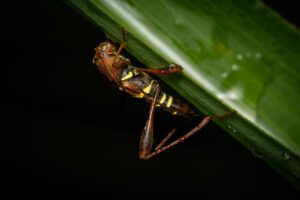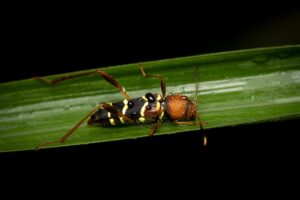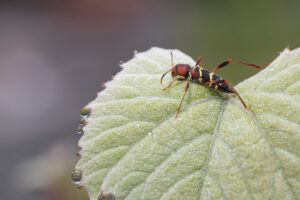Understanding the Redheaded Ash Borer: Friend or Foe?
The Redheaded Ash Borer (Neoclytus acuminatus) is a fascinating beetle that often sparks concern when spotted near trees. But is this insect a true menace to your landscape, or could it serve a beneficial role in your ecosystem? Let’s dive deeper into the life cycle, behavior, and impact of this often misunderstood insect.
Identification
As its name suggests, the redheaded ash borer is known for its reddish-brown head. The beetle has a long, slender body with black-and-yellow stripes running across its back, giving it a wasp-like appearance. Adult beetles are around 12–18mm in length and are most active during the spring and summer months.
Life Cycle and Behavior
The redheaded ash borer primarily targets dead or dying trees. The adult females lay eggs in the cracks of tree bark, and once hatched, larvae bore into the wood, feeding as they develop. They eventually pupate into adult beetles, emerging in the spring to begin the cycle anew.
While they primarily infest ash, oak, hickory, and other hardwoods, healthy, vigorous trees typically fend off an attack. The redheaded ash borer’s real role in the ecosystem is aiding in the decomposition of dead wood, contributing to natural nutrient cycling.
Signs of Infestation
How can you tell if a redheaded ash borer has targeted your trees? Here are a few key signs:
- Exit Holes: These beetles leave D-shaped exit holes in tree bark when they emerge.
- Frass: A fine sawdust-like material, known as frass, may accumulate around the base of trees infested by the larvae.
- Bark Damage: Weakened trees may show general bark damage, but the redheaded ash borer prefers trees that are already in decline.
Is the Redheaded Ash Borer a Threat?
In healthy trees, redheaded ash borers rarely cause significant harm. However, if your trees are already weakened due to disease, drought, or previous infestations, the borers can accelerate tree death.
Prevention and Treatment
Maintaining tree health is your best defense. Here’s what you can do:
- Prune dead wood: Removing dead or dying branches helps eliminate breeding sites.
- Water and mulch: Proper watering and mulching can keep trees healthy and less susceptible to attacks.
- Insecticide treatment: In severe cases, insecticides can be used, but consult a professional arborist for guidance.
Final Thoughts
While the redheaded ash borer can be a nuisance, it often serves an essential role in breaking down dead wood in natural environments. By focusing on proactive tree care, you can keep your landscape vibrant and pest-free.



